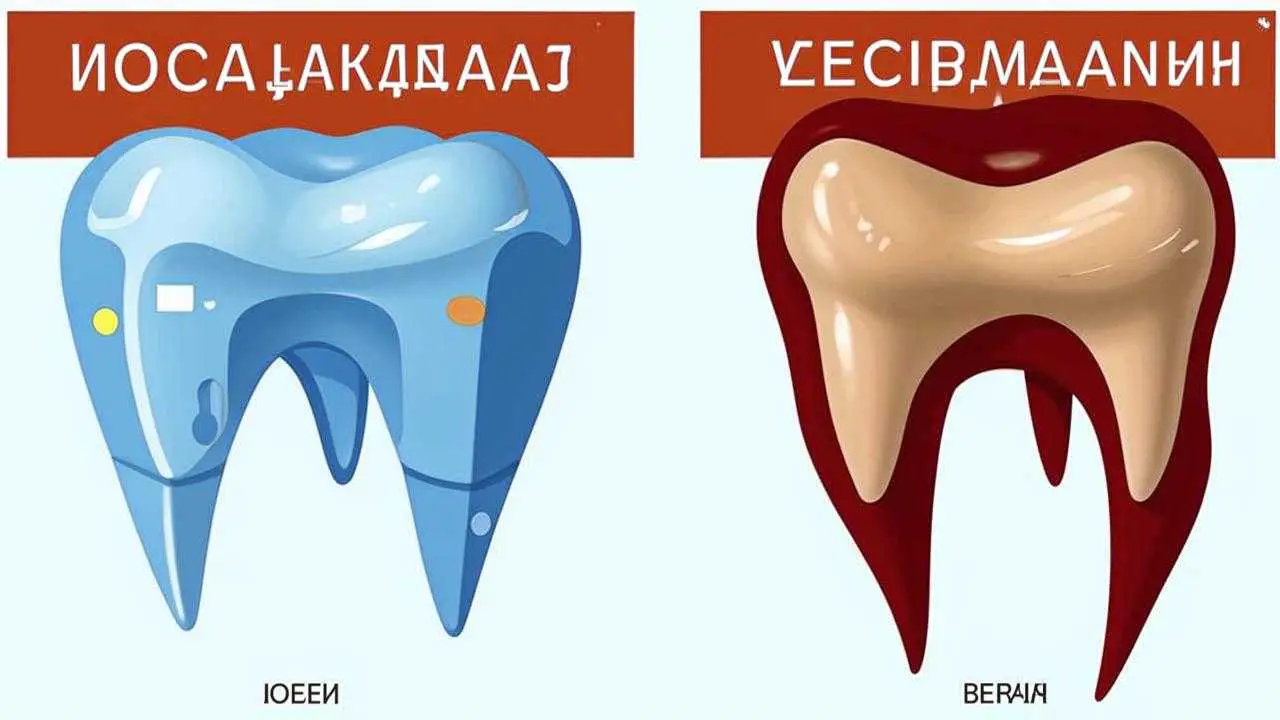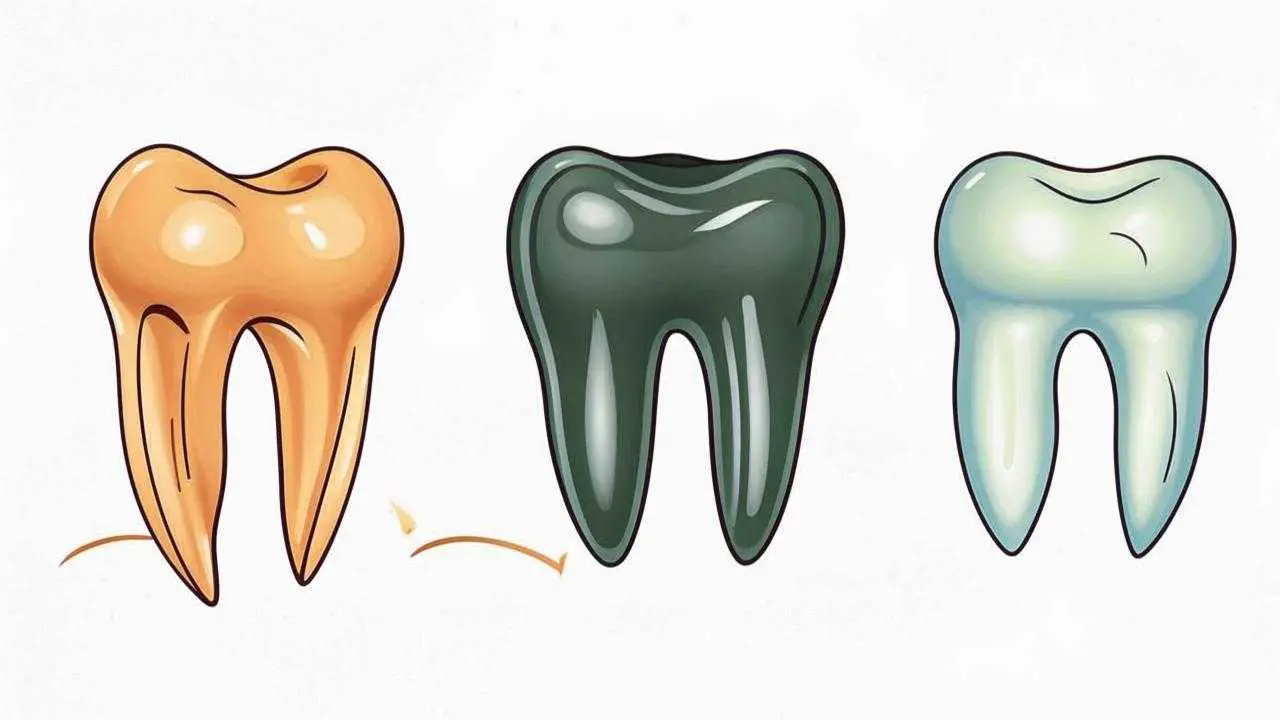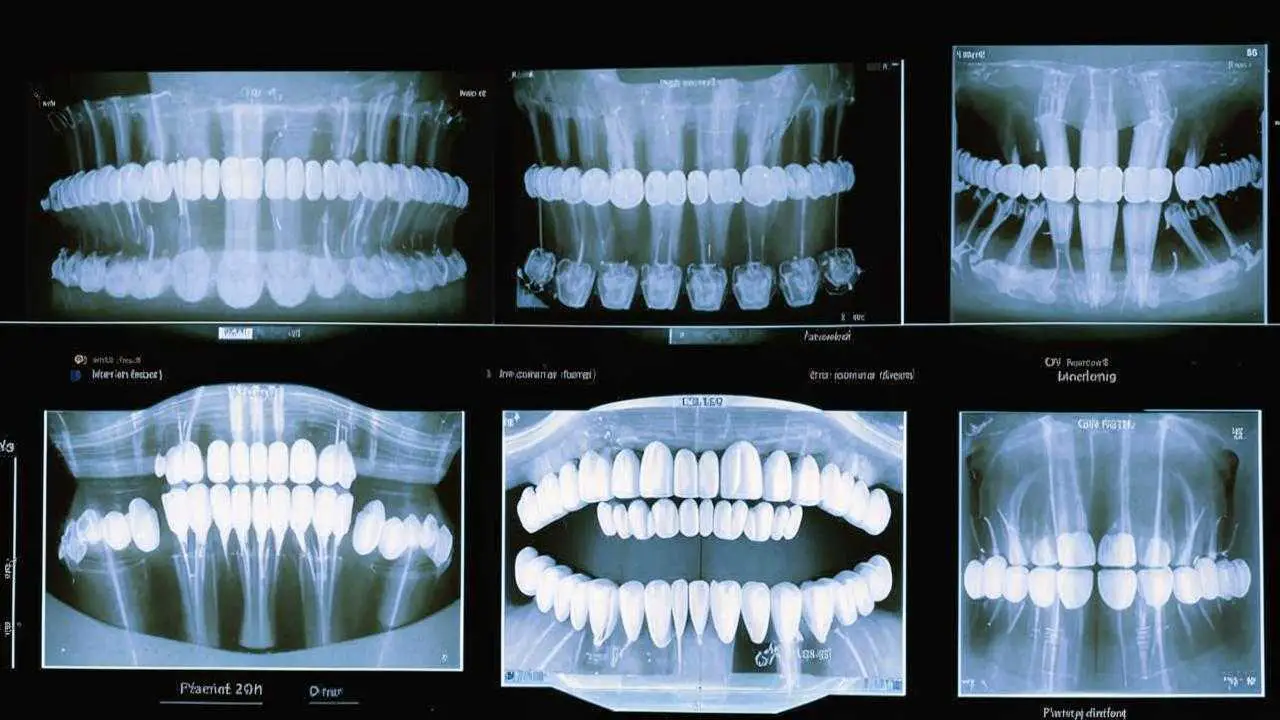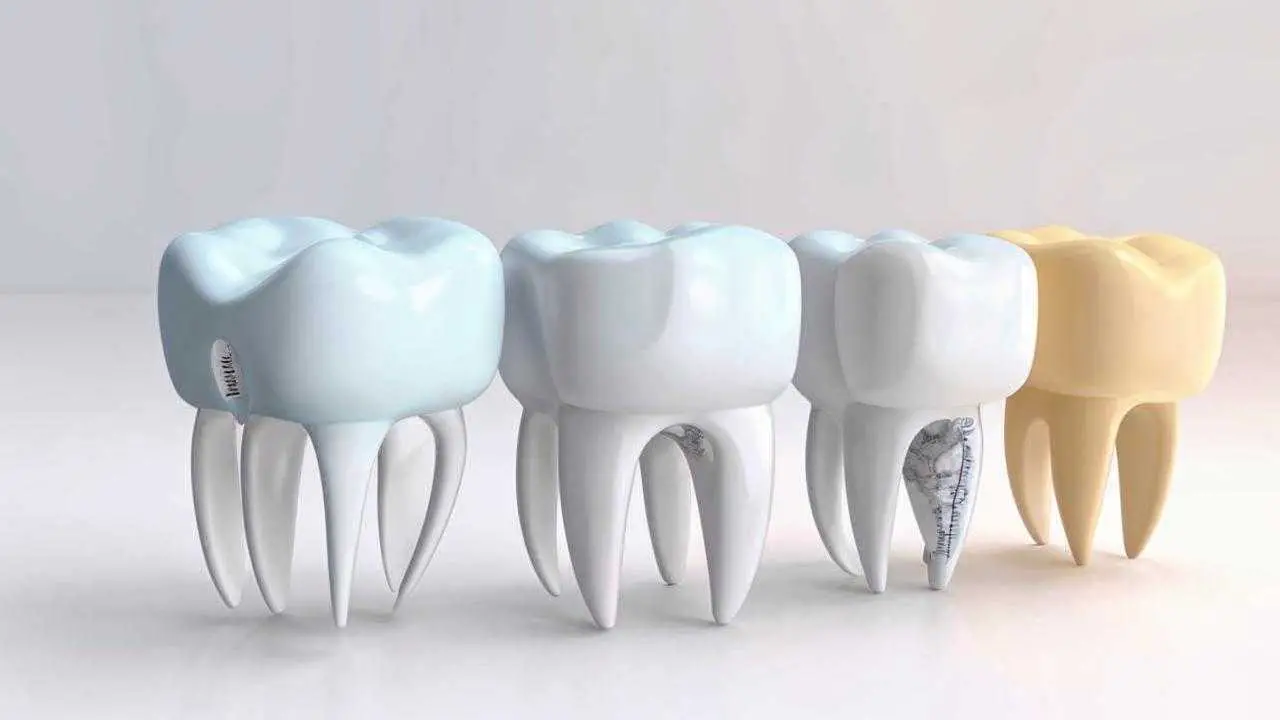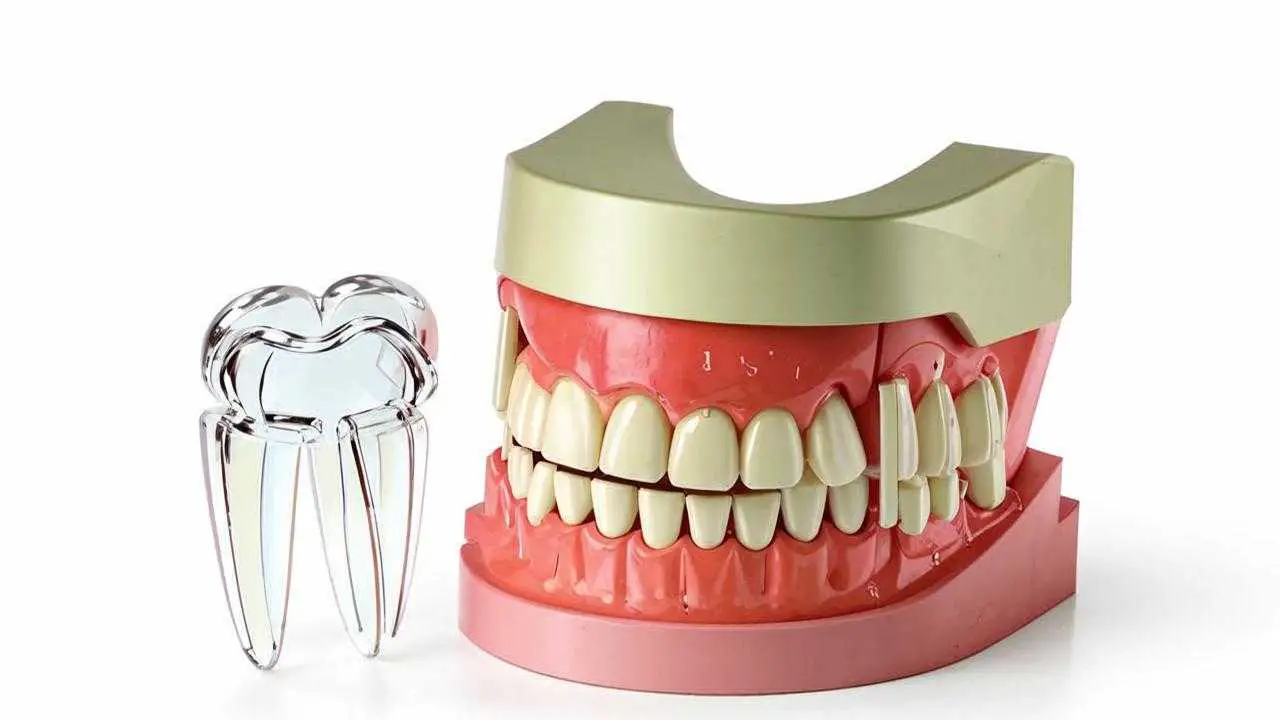Everyone’s teeth wear down as they age. Hard tissue is lost due to friction between surfaces and food. In most cases, this process is uniform, takes a long time and does not affect chewing function. It is a natural (physiological) loss of hard tissue. But sometimes the loss of enamel and dentin (the layer beneath the enamel) is so intense that they talk about pathological erasability of teeth (abrasion). This process leads to physiological disorders and affects all aspects of life.
الأعراض
At first, the disease is asymptomatic, so it is diagnosed in a neglected state. When the tooth enamel erodes and dentin becomes involved, patients begin to complain of hypersensitivity. Teeth react to temperature (hot, cold), chemical (sour, sweet), mechanical (touch of toothbrush) stimuli, causing inconvenience in everyday life.
Destruction of dentin leads to root inflammation (periodontitis), bone atrophy.
Gradually the height of the face decreases, and pain in the muscles and temporomandibular joint begins. The lower jaw is displaced upward and to the rear, the volume of the oropharynx decreases, less air is supplied. Respiratory problems begin. The center of gravity shifts, pathological disorders in the musculoskeletal system occur. Quality of life drops.
Increased tooth erosion – causes
Factors that lead to pathological loss of hard tissues are divided into several groups:
- Incompleteness of enamel and dentin. As a result of genetic disorders, harmful effects on the fetus during pregnancy or metabolic disorders, the quality of dentin and enamel decreases. If the balance of minerals is disturbed, the hard tissues of the tooth begin to wear away at an accelerated rate.
- Uneven chewing load. Improper bite, dental defects, bruxism, hypertonus of masticatory muscles, leads to the fact that some teeth receive an increased load. The ligamentous apparatus of the teeth becomes stretched and weak. It cannot provide support for the height of the lower face. This leads to problems with the TMJ.
- External factors. Work with chemical elements, abrasive substances reduces the quality of enamel and dentin.
التصنيف
Tooth erosion is divided by:
At the active stage, there is an increased erasure of hard tissues. In the stabilization stage, their condition can be maintained at an acceptable level.
- Spread
In localized abrasion, the anterior teeth are most often worn away. In generalized abrasion, all crowns are affected and the bite height is reduced. In severe cases, the crown may end right at the gum.
In the mixed form, the enamel is eroded not only from above, it decreases on all sides. In the horizontal form, the occlusal surfaces are affected, and in the vertical form, the lateral surfaces are affected.
- Severities:
- Mild or 1st degree (within the enamel)
- Transitional or 2nd degree (involving the superficial dentin layers)
- Pathologic or 3rd degree (with exposure of deep dentin layers)
In the 1st degree, speech and masticatory function are not affected. In the 2nd degree, hypersensitivity and masticatory function are affected. At the 3rd degree, pain in the temporomandibular joint begins. They go to the neck and head, can lead to hearing loss, vision loss.
التشخيص
Of great importance in diagnosis is the collection of anamnesis. The patient is asked whether there were complaints before. If so, what treatment was carried out. Clarify the presence of general, especially endocrine diseases. Find out in what conditions he works.
Then conduct an external examination. Pay attention to the symmetry of the face, the expression of folds. Check the work of the TMJ. Evaluate the height of the lower part of the face, taking special measurements.
When examining the oral cavity, pay attention to the bite, overlap of incisors, erasure of teeth. Evaluate the contact of the teeth when the jaws are clenched.
To get an accurate picture of the state of the crowns and bone tissue make orthopantomogram (panoramic image) and sight pictures. If indicated, a CT scan of the TMJ is ordered.
Treatment of tooth erosion
The main task of medical intervention is to establish and eliminate the cause of pathology. From this, to a large extent, depend on the methods of treatment. They include stabilization of the patient’s general condition in endocrine and other disorders, change of place of work, if it is about harmful production.
In cases where the enamel on the teeth is erased, apply:
- Medication methods
These are gels, solutions, toothpastes that reduce hypersensitivity and saturate the enamel with minerals.
- Restorative methods
Restoration of teeth with composite materials (direct restoration). This technique works well on front teeth, but is less effective on chewing teeth.
- Orthopedic treatment is added if the problem has affected the dentin.
Teeth are restored with inlays, crowns, fixed and removable prostheses. The main condition of prosthetics is the use of cast crowns. Stamped ones, especially on chewing teeth, fail very quickly. Plastic or ceramic veneers are used. Recently, veneers have been used for restorations.
As a method of treatment for increased erasability of teeth, bracket prostheses with occlusal onlays are widely used. The advantage of this method is that it does not require preparation of teeth (pulp removal). Depulping makes the teeth brittle, which is already a problem with this pathology.
- Orthodontic treatment is used for malocclusion and misalignment of teeth
Treatment-bite plates are used. They prevent the teeth from touching in order to form a new bite height. For the same purpose, dental mouth guards are worn. Unlike plates, mouth guards can separate the bite by 4 mm at once, which means that there will be fewer intermediate steps. Mouth guards are used for 2-3 degrees of erasure. After correction of the bite height, prosthetics are performed.
Temporomandibular joint dysfunction is treated by restoring the bite height. Once this is completed, the signs of dysfunction disappear in most patients. Then, special, inclined-plane mouth guards are used to return the lower teeth and jaw to a physiologic position.
- Surgical treatment
With surgery, the dentist lengthens the crown portion of the tooth by removing bone tissue from the alveolar process.
الوقاية
Tooth enamel erodes for many reasons, some of which, such as genetics, cannot be controlled. However, there are a number of measures that can prevent a physiologic process from becoming pathologic:
- Regular visits to the dentist
During the examination, the doctor will see chips, caries, white spots – signals of demineralization, and will take measures. Treatment and prosthetics will help to stop the process of destruction of hard tissues in time.
- Healthy lifestyle
A balanced diet and physical activity maintain the general level of health, excluding systemic diseases as a trigger of pathological tooth erosion.
- Oral hygiene
It is important to choose the right brush, so that it is not too hard and exclude abrasive toothpastes.
The main means of preventing tooth wear is to restore the dentition using comprehensive measures as soon as the need arises.
